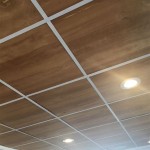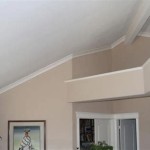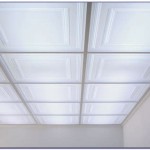Why Do Old Houses Have Such High Ceilings?
Strolling through antiquated abodes, one cannot help but notice the soaring ceilings that grace these architectural relics. Unlike modern homes with their comparatively modest heights, these bygone structures seem to stretch towards the heavens, evoking a sense of grandeur and spaciousness. But why did builders of yesteryear favor such lofty ceilings? Let us delve into the historical and practical reasons behind this distinctive design feature.
Prestige and Status
In the past, high ceilings were a symbol of wealth and status. The ability to construct a home with ample headroom required significant resources and skilled craftsmanship. Thus, tall ceilings became a way for affluent families to flaunt their prosperity and social standing.
Better Air Circulation
Before the advent of modern air conditioning, high ceilings played a crucial role in maintaining comfortable indoor temperatures. The warm air rises, and the taller the ceilings, the more space there is for this warm air to accumulate. This prevented rooms from becoming stuffy and uncomfortable, especially during the sweltering summer months.
Natural Lighting
High ceilings allowed for larger windows, which flooded the interiors with natural light. This was especially important in an era when artificial lighting was limited. The abundant sunlight not only brightened the rooms but also helped to dispel dampness and prevent the growth of mold.
Practicality
For certain types of rooms, such as ballrooms and assembly halls, high ceilings were essential for accommodating large gatherings. The extra height provided ample space for chandeliers and other elaborate fixtures, enhancing the grandeur of these communal spaces.
Style and Aesthetics
High ceilings also played a significant role in shaping the aesthetic sensibilities of the time. They created a sense of verticality and spaciousness, which was considered desirable in many architectural styles, including Gothic, Victorian, and Georgian. The soaring heights added an air of drama and elegance to these historic homes.
Building Materials and Construction Techniques
The availability of certain building materials and construction techniques also contributed to the prevalence of high ceilings in older homes. In the past, timber was a common building material, and its structural properties allowed for the construction of tall, sturdy frames. Additionally, the use of balloon framing, where each story is built on top of the previous one, enabled builders to achieve greater heights.
Conclusion
High ceilings in old houses were not merely an architectural whim but served a multitude of purposes. They reflected social status, improved air circulation, provided natural lighting, accommodated practical needs, and enhanced the aesthetic appeal of these historic structures. As we admire these architectural legacies, let us appreciate the ingenuity and craftsmanship that went into creating these grand spaces that continue to captivate us today.

High Ceilings In Old Houses Looking For Documentation Page 2 The Historic District
Why Do Many Old Buildings Have Tall Ceilings If They Were Former Factories Converted To Condos I Understand But What About Houses Was This A Sign Of Wealth Quora
Why Do Old Homes Have Low Ceilings Quora

6 Things I Love About 1920s Houses House And Hammer

Why Do Old Houses Have High Ceilings Village Cottage

How To Take Advantage Of High Ceilings In Renovations Archdaily

Such Tall Ceilings Circa 1925 In Georgia 167 900 The Old House Life

Look Inside Such Tall Ceilings Circa 1901 In North Ina 169 900 The Old House Life

Here S The Standard Ceiling Height For Every Type Of Bob Vila

Such Tall Ceilings Circa 1903 In Louisiana 55 000 The Old House Life
Related Posts








